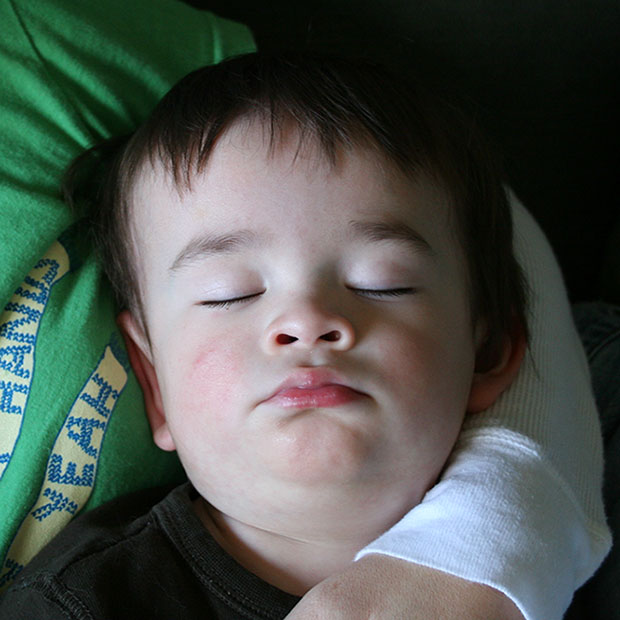Snoring, Sleep Apnea, and Teeth

Sleep apnea affects over 18 million adults and up to 20% of habitually snoring children in the United States alone.
Sleep apnea is a sleep disorder characterized by brief, repeated interruptions to normal breathing during sleep. It can have many short and long-term effects on a person’s health (to the point of being potentially life-threatening) and is also very harmful to oral health.
Sleep Apnea Comes in Different Types
The most common type of sleep apnea is obstructive sleep apnea (OSA). It is caused by a blocked airway, usually the tongue relaxing back until it collapses against the soft palate, which in turn collapses against the back of the throat, sealing off the airway.
Less commonly, a person could have central sleep apnea, in which the brain fails to send signals to the respiratory muscles to keep breathing during sleep. Some people have a combination of both types, which is called complex sleep apnea.
Whether the airway is physically blocked or the brain isn’t sending signals to breathe, the lack of oxygen causes the brain to react in alarm and force the person to wake up long enough to take a breath. They usually don’t remember waking up because it only lasts a few seconds, but it can happen as many as hundreds of times in a single night, making it impossible to get a restful night’s sleep. The cumulative effect on sleep quality can be severe.
Sleep Apnea and Oral Health
Aside from having to deal with symptoms of sleep deprivation like morning headaches, exhaustion, and difficulty concentrating (all of which can be terrible for kids trying to do well in school), sleep apnea means oral health difficulties.
Sleep apnea is associated with an increased risk of moderate to severe gum disease and temporomandibular joint disorders (TMD). This is because the jaw reflexively clenches in an effort to keep the airway open during a sleep apnea episode. This kind of TMD issue can compound, leading to problems like pain when chewing, neck and shoulder pain, damaged teeth, and chronic headaches.
The Dentist Can Help
It is so common to experience dental symptoms with sleep apnea that the dentist is often the first health care professional to observe the signs and diagnose the condition. That’s one good reason of many to keep up with your and your child’s regular dental appointments — not just for the sake of your oral health, but also your overall health!
Common ways sleep apnea is treated include nighttime dental devices that adjust the position of the jaw and tongue and continuous positive airway pressure (CPAP) machines.
Healthier Sleep Means a Healthier Smile!
We all need to sleep well to feel our best. If you or your child have been struggling with the effects of sleep apnea, your next visit to the dentist could change your life. Schedule your next appointment today, and we can see if you’re showing signs of sleep apnea and put you on the path to a full night’s sleep and the healthy smile you deserve.
Wishing a wonderful night’s sleep to all of our patients!
Top image by Flickr user originallittlehellraiser used under Creative Commons Attribution-Sharealike 4.0 license. Image cropped and modified from original.
The content on this blog is not intended to be a substitute for professional medical advice, diagnosis, or treatment. Always seek the advice of qualified health providers with questions you may have regarding medical conditions.
